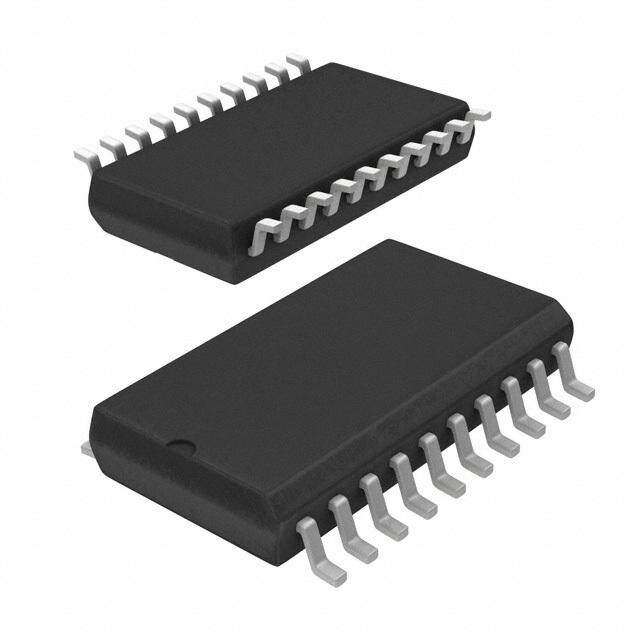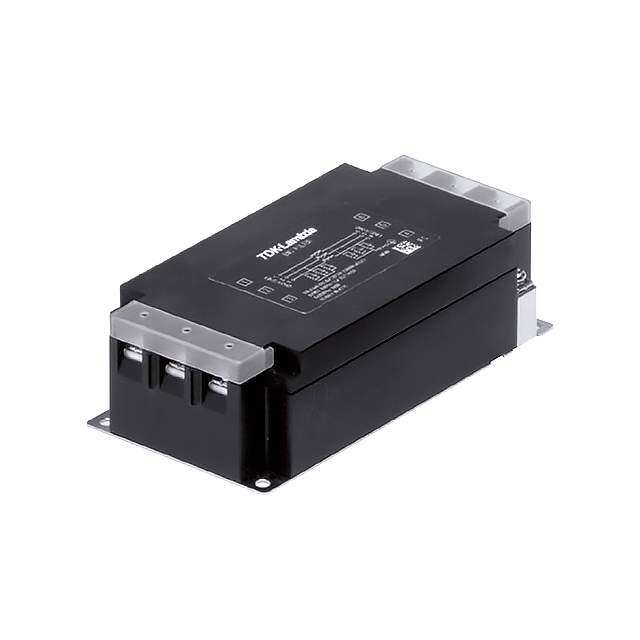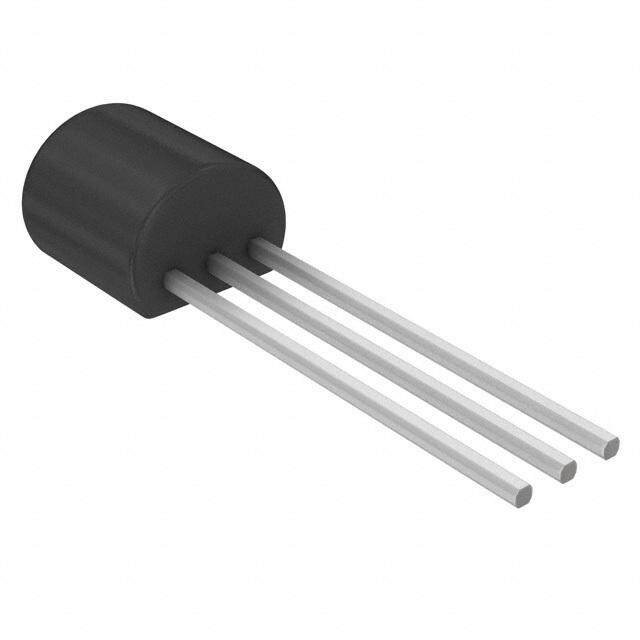ICGOO在线商城 > SPWF01SC.21
- 型号: SPWF01SC.21
- 制造商: STMicroelectronics
- 库位|库存: xxxx|xxxx
- 要求:
| 数量阶梯 | 香港交货 | 国内含税 |
| +xxxx | $xxxx | ¥xxxx |
查看当月历史价格
查看今年历史价格
SPWF01SC.21产品简介:
ICGOO电子元器件商城为您提供SPWF01SC.21由STMicroelectronics设计生产,在icgoo商城现货销售,并且可以通过原厂、代理商等渠道进行代购。 提供SPWF01SC.21价格参考以及STMicroelectronicsSPWF01SC.21封装/规格参数等产品信息。 你可以下载SPWF01SC.21参考资料、Datasheet数据手册功能说明书, 资料中有SPWF01SC.21详细功能的应用电路图电压和使用方法及教程。
| 参数 | 数值 |
| 品牌 | STMicroelectronics |
| 产品目录 | 嵌入式解决方案 |
| 描述 | WiFi/802.11模块 |
| 产品分类 | 射频/无线模块 |
| 产品手册 | |
| 产品图片 |
|
| rohs | 符合RoHS |
| 产品系列 | WiFi/802.11模块,STMicroelectronics SPWF01SC.21 |
| mouser_ship_limit | 根据美国政府的出口法规规定,Mouser无法将此产品销售到您所在的国家。 |
| 产品型号 | SPWF01SC.21 |
| 产品种类 | WiFi/802.11模块 |
| 传输供电电流 | 250 mA |
| 传输功率—最大值 | 18.3 dBm |
| 商标 | STMicroelectronics |
| 天线连接器类型 | U.FL |
| 尺寸 | 26.92 mm x 15.24 mm x 2.35 mm |
| 工作电源电压 | 3.3 V |
| 接口类型 | I2C, SPI, UART |
| 接收供电电流 | 90 mA |
| 支持协议 | 802.11 b/g/n |
| 最大工作温度 | + 85 C |
| 最小工作温度 | - 40 C |
| 频带 | 2.4 GHz |

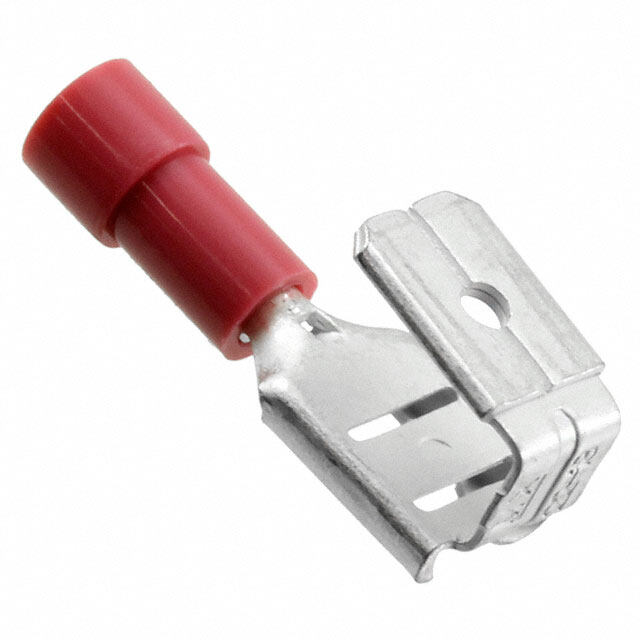
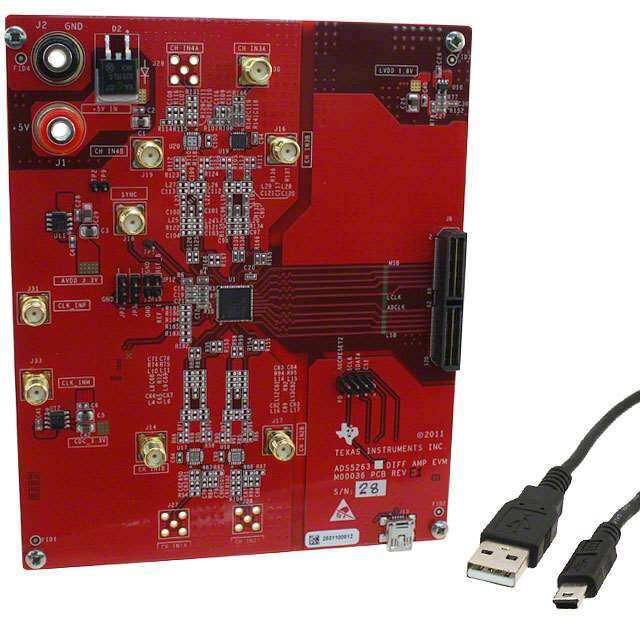

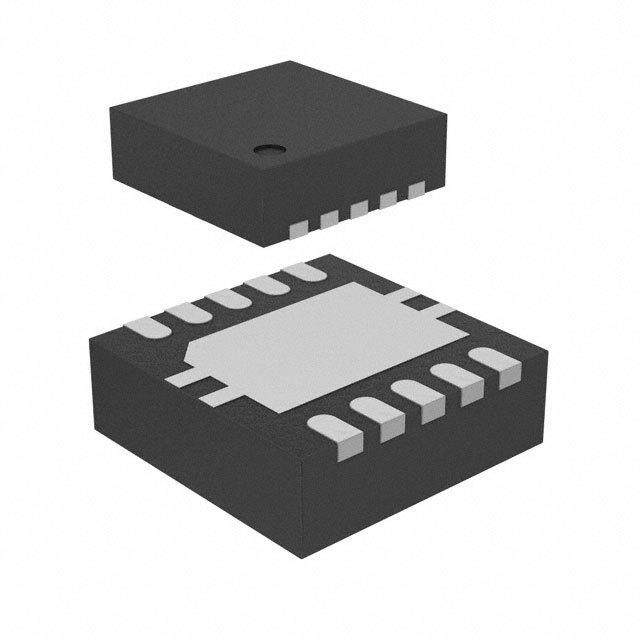
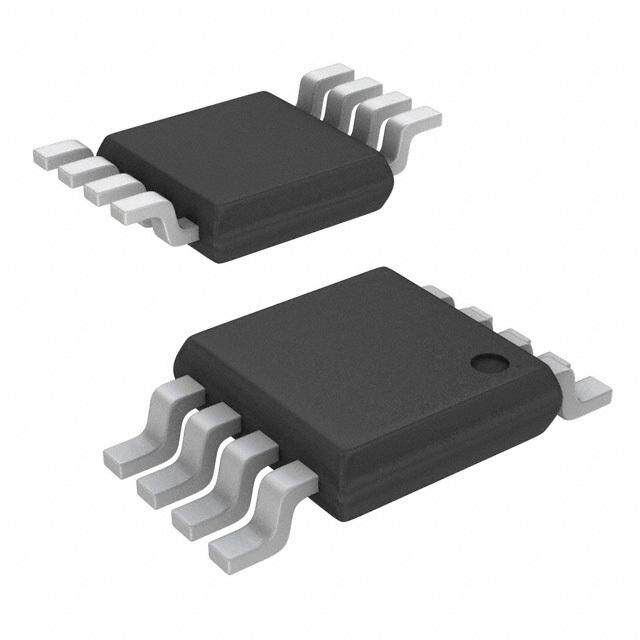

- 商务部:美国ITC正式对集成电路等产品启动337调查
- 曝三星4nm工艺存在良率问题 高通将骁龙8 Gen1或转产台积电
- 太阳诱电将投资9.5亿元在常州建新厂生产MLCC 预计2023年完工
- 英特尔发布欧洲新工厂建设计划 深化IDM 2.0 战略
- 台积电先进制程称霸业界 有大客户加持明年业绩稳了
- 达到5530亿美元!SIA预计今年全球半导体销售额将创下新高
- 英特尔拟将自动驾驶子公司Mobileye上市 估值或超500亿美元
- 三星加码芯片和SET,合并消费电子和移动部门,撤换高东真等 CEO
- 三星电子宣布重大人事变动 还合并消费电子和移动部门
- 海关总署:前11个月进口集成电路产品价值2.52万亿元 增长14.8%
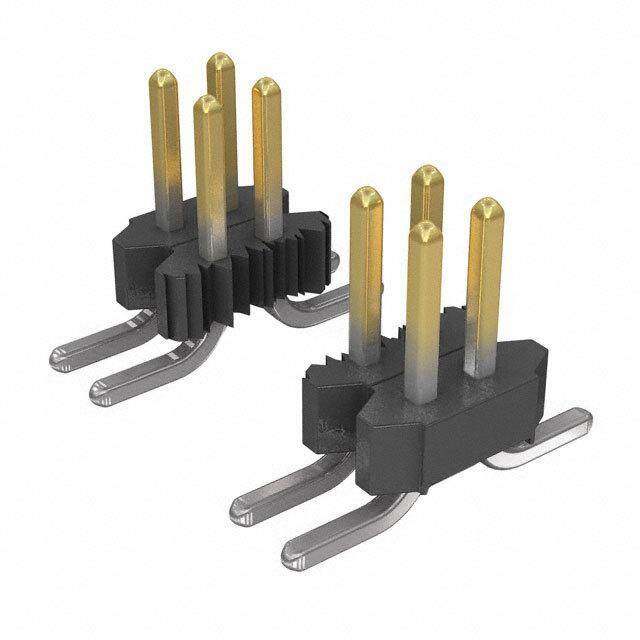

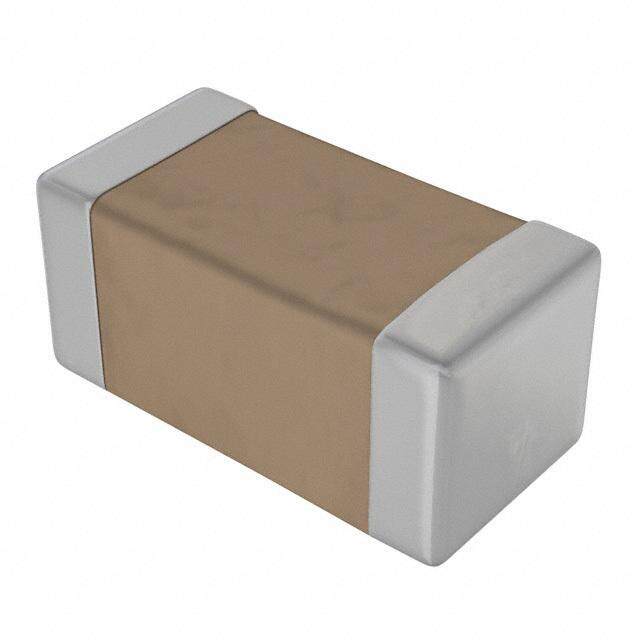

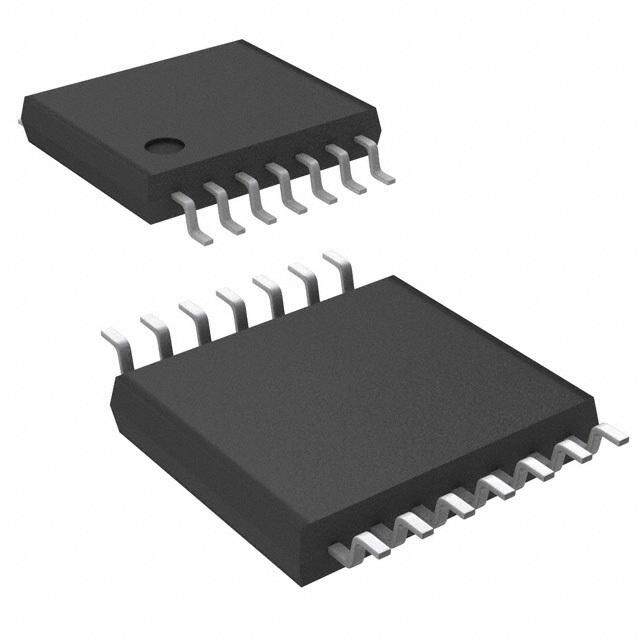
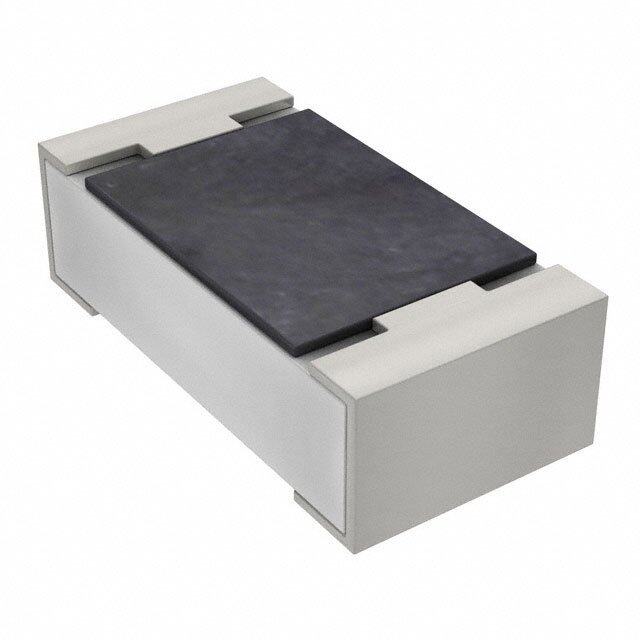
PDF Datasheet 数据手册内容提取
SPWF01SA SPWF01SC Serial-to-Wi-Fi b/g/n intelligent modules Datasheet - production data • RX sensitivity – -96.0 dBm @ 1 Mbps DSSS – -74.5 dBm @ 54 Mbps OFDM • 16 configurable GPIOs available • UART interface to host system • Advanced low-power modes – Standby with RTC: 43 µA – Idle connected (DTIM=1): 3.9 mA – Sleep current: 2.2 mA – RX traffic: 105 mA typical – TX traffic: 243 mA typical @ 10 dBm Features • Simple AT command set host interface through • 2.4 GHz IEEE 802.11 b/g/n transceiver UART • STM32 ARM Cortex-M3, with 64 kB RAM and • Small form factor: 26.92 x 15.24 x 2.35 mm 512 kB Flash memory • Single voltage supply (3.3 V typical) – 1 MB extended Flash available on the • Multiple antenna options: SPWF01Sx.1y – Integrated antenna (SPWF01SA.xy • Integrated TCP/IP protocol stack versions) – 8 simultaneous TCP or UDP clients and 1 – Integrated u.fl connector (SPWF01SC.xy socket server versions) – 1 TLS/SSL socket client supporting up to • Industrial temperature range: -40 °C to 85 °C TLS 1.2, including common encryption algorithms: AES (128, 256), hash (MD5, • FCC/CE/IC/SRRC certified SHA-1, SHA-256) and public key • RoHS compliant algorithms (RSA, ECC) • Surface mount PCB module – Web server supporting dynamic web pages – RESTful API to get and post web content Applications • WEP/WPA/WPA2 personal security • System modes: station, IBSS, and miniAP • Smart appliances (supporting up to 5 stations) • Industrial control and data acquisition • miniAP easily provisioned (SSID, PWD) • Home automation and security systems • Fast Wi-Fi re-association after reset • Wireless sensors • Firmware update via UART and Over-The-Air • Cable replacement (FOTA); extended Flash on board with the • Medical equipment SPWF01Sx.1y • Machine-to-machine communication • TX power – 18.3 dBm @ 1 Mbps DSSS – 13.7 dBm @ 54 Mbps OFDM July 2018 DocID025635 Rev 9 1/21 This is information on a product in full production. www.st.com
Contents SPWF01SA, SPWF01SC Contents 1 Description . . . . . . . . . . . . . . . . . . . . . . . . . . . . . . . . . . . . . . . . . . . . . . . . . 3 2 General electrical specifications . . . . . . . . . . . . . . . . . . . . . . . . . . . . . . . 5 3 Digital interface specifications . . . . . . . . . . . . . . . . . . . . . . . . . . . . . . . . 6 4 RF characteristics . . . . . . . . . . . . . . . . . . . . . . . . . . . . . . . . . . . . . . . . . . . 7 5 Pinout description . . . . . . . . . . . . . . . . . . . . . . . . . . . . . . . . . . . . . . . . . . . 8 Application guidelines. . . . . . . . . . . . . . . . . . . . . . . . . . . . . . . . . . . . . . . . . . . . . . 10 6 Module reflow . . . . . . . . . . . . . . . . . . . . . . . . . . . . . . . . . . . . . . . . . . . . . 11 7 Regulatory compliance . . . . . . . . . . . . . . . . . . . . . . . . . . . . . . . . . . . . . . 13 7.1 RF compliance . . . . . . . . . . . . . . . . . . . . . . . . . . . . . . . . . . . . . . . . . . . . . 13 7.2 FCC and IC . . . . . . . . . . . . . . . . . . . . . . . . . . . . . . . . . . . . . . . . . . . . . . . 13 7.2.1 Modular approval, FCC and IC . . . . . . . . . . . . . . . . . . . . . . . . . . . . . . . 13 7.2.2 Labeling instructions . . . . . . . . . . . . . . . . . . . . . . . . . . . . . . . . . . . . . . . 14 7.3 CE . . . . . . . . . . . . . . . . . . . . . . . . . . . . . . . . . . . . . . . . . . . . . . . . . . . . . . 14 7.4 SRRC . . . . . . . . . . . . . . . . . . . . . . . . . . . . . . . . . . . . . . . . . . . . . . . . . . . . 14 8 Package information . . . . . . . . . . . . . . . . . . . . . . . . . . . . . . . . . . . . . . . . 15 8.1 Module shield package information . . . . . . . . . . . . . . . . . . . . . . . . . . . . . 15 9 Ordering information . . . . . . . . . . . . . . . . . . . . . . . . . . . . . . . . . . . . . . . 18 10 Traceability information . . . . . . . . . . . . . . . . . . . . . . . . . . . . . . . . . . . . . 19 11 Revision history . . . . . . . . . . . . . . . . . . . . . . . . . . . . . . . . . . . . . . . . . . . 20 2/21 DocID025635 Rev 9
SPWF01SA, SPWF01SC Description 1 Description The SPWF01SA and the SPWF01SC intelligent Wi-Fi modules represent a plug-and-play and standalone 802.11 b/g/n solution for easy integration of wireless internet connectivity features into existing or new products. Configured around a single-chip 802.11 transceiver with integrated PA and comprehensive power management subsystem, and an STM32 microcontroller with an extensive GPIO suite, the modules also incorporate timing clocks and voltage regulators. Two different options exist based on the integrated Flash memory. The SPWF01Sx.1y orderable parts integrate 1.5 MB of Flash, while the SPWF01Sx.2y orderable parts integrate 512 kB of Flash. The module is available either configured with an embedded micro 2.45 GHz highly-efficient ISM band antenna (SPWF01SA), or with an u.fl connector for external antenna connection (SPWF01SC). With low power consumption and ultra-compact (2.7 x 1.5 cm) footprint, the modules are ideal for fixed and mobile wireless applications, as well as challenging battery-operated applications. The SPWF01Sx parts are released with an integrated full featured TCP/IP protocol stack with added web server and additional application service capabilities, such as REST API for accessing files on servers in the cloud and support for dynamic web pages with CGI/SSI functions to easily interact with the module and the host processor Over-The-Air. For secure end-to-end communication with the cloud, an SSL/TLS stack is embedded in every module with no licensing charge. See AN4683 for details. The SW package also includes an AT command layer interface for user-friendly access to the stack functionalities via the UART serial port. For details, see UM1695. It is always possible to upgrade the module firmware via UART and Over-The-Air (FOTA). Out of the 1 MB extended Flash available on the SPWF01Sx.1y module, 512 kB of the Flash is dedicated to FW upgrade and the other 512 kB is dedicated to host proprietary files, organized in a file system image, accessible through the integrated web server. FOTA is also possible with the SPWF01Sx.2y module, temporarily storing the FW in the external host Flash memory, if it exists. ST may update the FW provided with the modules at any time. ST recommends that users regularly check for documentation and the current FW version available at www.st.com/wifimodules. DocID025635 Rev 9 3/21 21
Description SPWF01SA, SPWF01SC Figure 1. Block diagram (cid:22)(cid:17)(cid:22)(cid:3)(cid:57) (cid:57)(cid:82)(cid:79)(cid:87)(cid:68)(cid:74)(cid:72)(cid:3)(cid:85)(cid:72)(cid:74)(cid:88)(cid:79)(cid:68)(cid:87)(cid:76)(cid:82)(cid:81) (cid:21)(cid:17)(cid:24)(cid:3)(cid:57) (cid:54)(cid:55)(cid:48)(cid:22)(cid:21) (cid:38)(cid:58)(cid:20)(cid:20)(cid:19)(cid:19)(cid:3) (cid:41)(cid:20)(cid:19)(cid:22) (cid:69)(cid:18)(cid:74)(cid:18)(cid:81) (cid:36) (cid:56)(cid:36)(cid:53)(cid:55) (cid:55)(cid:91)(cid:18)(cid:53)(cid:91) (cid:41)(cid:76)(cid:79)(cid:87)(cid:72)(cid:85) (cid:44)(cid:81)(cid:87)(cid:72)(cid:74)(cid:85)(cid:68)(cid:87)(cid:72)(cid:71)(cid:3) (cid:54)(cid:90)(cid:76)(cid:87)(cid:70)(cid:75) (cid:42)(cid:51)(cid:44)(cid:50)(cid:86) (cid:38) (cid:51)(cid:36) (cid:53)(cid:40)(cid:54)(cid:40)(cid:55)(cid:81) (cid:37)(cid:82)(cid:82)(cid:87)(cid:19) (cid:22)(cid:27)(cid:3)(cid:48)(cid:43)(cid:93) (cid:41)(cid:79)(cid:68)(cid:86)(cid:75)(cid:3)(cid:20)(cid:48)(cid:37) (cid:11)(cid:54)(cid:51)(cid:58)(cid:41)(cid:19)(cid:20)(cid:54)(cid:91)(cid:17)(cid:20)(cid:20)(cid:3)(cid:82)(cid:81)(cid:79)(cid:92)(cid:12) (cid:54)(cid:51)(cid:58)(cid:41)(cid:19)(cid:20)(cid:54)(cid:91) 4/21 DocID025635 Rev 9
SPWF01SA, SPWF01SC General electrical specifications 2 General electrical specifications Table 1. Absolute maximum ratings Parameter Test conditions/comment Min. Typ. Max. Unit Voltage supply -0.3 4.0 V Vin for 5 V tolerant pins -0.3 5.5 V - - Vin for all other pins -0.3 2.8 V Storage temperature range -55 105 °C Table 2. Operating conditions and input power specifications(1) Parameter Test conditions/comment Min. Typ. Max. Unit Operating temperature range Industrial -40 85 °C Input supply voltage 3.3 V supply input 3.1 3.3 3.6 V Both the STM32 and the radio Standby 43 μA are in standby power states The STM32 is in stop power Sleep state and the radio is in sleep 3 mA power state The STM32 is active and the Low power state 26 mA radio is in sleep power state 3.3 V TX power = 0 dBm 236 mA supply 802.11b TX power = 10 dBm 250 mA TX power = 18 dBm 344 mA TX TX power = 0 dBm 210 mA 802.11g TX power = 10 dBm 243 mA TX power = 18 dBm 338 mA 802.11b 105 mA RX 802.11g 105 mA 1. Typical results are at room temperature only. DocID025635 Rev 9 5/21 21
Digital interface specifications SPWF01SA, SPWF01SC 3 Digital interface specifications Table 3. Digital interface specifications, I/O pins Parameter Test conditions/comment Min. Typ. Max. Unit VIH 1.6 2.8 V Inputs VIL 0.9 V - VOH IOH = 4 mA 2.1 2.5 V Outputs VOL IOL = 4 mA 0.4 V 6/21 DocID025635 Rev 9
SPWF01SA, SPWF01SC RF characteristics 4 RF characteristics Table 4. RF characteristics Test Parameter Min. Typ. Max. Unit conditions/comment 11b, 1 Mbps -96 dBm 11b, 2 Mbps -93 dBm 11b, 5.5 Mbps -91 dBm 11b, 11 Mbps -87 dBm 11g, 9 Mbps -89.5 dBm 11g, 18 Mbps -86 dBm RX sensitivity(1) 11g, 36 Mbps -80 dBm 11g, 54 Mbps -74.5 dBm 11n, MCS1, 13 Mbps -86.5 dBm 11n, MCS3, 26 Mbps -81.5 dBm 11n, MCS5, 52 Mbps -74 dBm 11n, MCS7, 65 Mbps -71 dBm Channel-to-channel CH1 to 14 11g, 54 Mbps, 10%PER 1 dB de-sensitivity Maximum input signal CH7 11g, 54 Mbps -20 dBm 11Mbps 38 dBc 9 Mbps 20 dBc Adjacent channel rejection 54 Mbps 4 dBc MCS1 24 dBc MCS7 3 dBc 11b, 1 Mbps 18.3 dBm @ 11b spectral mask 11b, 11 Mbps 18.3 dBm 11g, 9 Mbps @ 11g spectral mask 18.3 dBm TX output power (1) 11g, 54 Mbps EVM = -27 dB, 4.5% 13.7 dBm 11n, MCS1 @ 11n spectral mask 18.3 dBm 11n, MCS7 EVM = -27 dB 13.5 dBm On-board antenna gain Average -1.2 dBi SG901-1066 average External antenna gain 2.8 dBi including cable loss 1. Output power and sensitivities are measured with a 50 Ω connection at the antenna port. DocID025635 Rev 9 7/21 21
Pinout description SPWF01SA, SPWF01SC 5 Pinout description Table 5. Pinout description Alternate Signal name Type Pin number Main function Notes functions(1) GPIO - general purpose input/output General purpose input/output Input pull down and GPIO[0] I/O 16 Restore to factory 5V tolerant settings(2) General purpose Input pull down and GPIO[1] I/O 17 PWM input/output 5V tolerant General purpose Floating and 5V GPIO[2] I/O 19 input/output tolerant General purpose Input pull down and GPIO[3] I/O 1 input/output 5V tolerant General purpose input/output Input pull down and GPIO[6] I/O 22 Wake Up/Sleep 5V tolerant Inhibit(3) General purpose GPIO[4] I/O 18 input/output General purpose GPIO[5] I/O 20 input/output General purpose input/output GPIO[7] I/O 13 STA/Mini AP switch (4) General purpose GPIO[8] I/O 4 ADC input/output General purpose GPIO[9] I/O 7 input/output GPIO[11] I/O 11 General purpose GPIO[12] I/O 12 input/output General purpose GPIO[15] I/O 21 DAC input/output Monitoring purpose with no alternate function Drives LED, Blinks GPIO[10] I/O 5 while running Drives LED, Wi-Fi GPIO[13] I/O 15 link up LED drive, Power GPIO[14] I/O 14 up 8/21 DocID025635 Rev 9
SPWF01SA, SPWF01SC Pinout description Table 5. Pinout description (continued) Alternate Signal name Type Pin number Main function Notes functions(1) UART pins UART1 Receive RXD1 I 8 5 V tolerant data input UART1 Transmit TXD1 O 6 5 V Tolerant data output UART1 Clear to CTS1_DN I 9 Active low, 5 V tolerant send input UART1 Request to RTS1_DP O 10 Active low, 5 V tolerant send output Reset Active low for 5 ms RESETn I 3 Reset input with pull up to 2.5 VDC. Not 5 V tolerant Supply pins and paddle Decouple with 10 μF 3.3 V 24 Voltage supply capacitor Ground 23 Ground Add plenty of ground vias for thermal Ground Paddle 25 Ground dissipation and ground return Boot loader BOOT0 I 2 Boot loader (5) 1. The activation of ALT function depends upon the firmware version or upon the variable configuration. 2. To perform the factory reset of the variables, pin GPIO0 must be high during powerup. 3. GPIO function running when low power mode variable is enabled. 4. Introduced with the release 3.0 of AT Full stack. To enable the STAToMiniAP switch the GPIO[7] needs to be put low together with the HW reset. 5. To enable the firmware download, pin BOOT0 needs to be high during power up. RESETn need to be pulled low at least 5 ms to initiate the firmware download sequence. Note: Pin 26 to pin 30 are reserved and they can be left floating in the final design. DocID025635 Rev 9 9/21 21
Pinout description SPWF01SA, SPWF01SC Application guidelines As a general rule, when signals between the I/O pins of the external host processor and the module are to be connected (e.g. from 2.5 V to 3.3 V), a level translator should be used to match the voltage of the I/O pins. Please refer to the data brief for the STEVAL-IDW001V1 evaluation board on st.com, which includes a schematic diagram illustrating the use of the level translator. The HOST processor should control the RESETn pin of the module in order to recover from unexpected behavior using the HW reset. 10/21 DocID025635 Rev 9
SPWF01SA, SPWF01SC Module reflow 6 Module reflow The SPWF01SA and SPWF01SC are surface mount modules with a 6-layer PCB. The recommended final assembly reflow profiles are indicated below. The soldering phase must be executed with care: in order to prevent an undesired melting phenomenon, particular attention must be paid to the setup of the peak temperature. The following are some suggestions for the temperature profile based on the IPC/JEDEC J- STD-020C, July 2004 recommendations. Table 6. Soldering values Profile feature PB-free assembly Average ramp-up rate (T to T ) 3 °C/s max. SMAX P Preheat: – Temperature min. (T min.) 150 °C s – Temperature max. (T max.) 200 °C s – Time (T min. to T max) (ts) 60-100 s s s Critical zone: 217 °C Temperature T L 60-70 s Time T L Peak temperature (T ) 240 + 0 °C P Time within 5 °C of actual peak temperature (T ) 10-20 s P Ramp-down rate 6 °C/s Time from 25 °C to peak temperature 8 minutes max. DocID025635 Rev 9 11/21 21
Module reflow SPWF01SA, SPWF01SC Figure 2. Soldering profile AM17477v1 12/21 DocID025635 Rev 9
SPWF01SA, SPWF01SC Regulatory compliance 7 Regulatory compliance 7.1 RF compliance The RF certifications obtained are described in Table7. Table 7. RF certification summary Comment FCC ID VRA-SG9011203 On board antenna and external SG901-1066 with connector version IC ID 7420A-SG9011203 On board antenna and external SG901-1066 with connector version ETSI Compliant Approved with on board antenna and connector version Note: The SG901-1066 from Sagrad Inc. is the only approved antenna using the u.fl connector version. 7.2 FCC and IC This module has been tested and complies with the FCC part 15 and IC RSS-210 regulations. These limits are designed to provide reasonable protection against harmful interference in approved installations. This equipment generates, uses, and can radiate radio frequency energy and, if not installed and used in accordance with the instructions, may cause harmful interference to radio communications. However, there is no guarantee that interference will not occur in a particular installation. This device complies with part 15 of the FCC rules. Operation is subject to the following two conditions: 1. The device must not cause harmful interference. and 2. The device must accept any interference received, including interference that may cause undesired operation. Modifications or changes to this equipment not expressly approved by the party responsible for compliance may render void the user's authority to operate this equipment. 7.2.1 Modular approval, FCC and IC FCC ID: VRA-SG9011203 IC: 7420A-SG9011203 In accordance with FCC part 15, the modules SPWF01SA and SPWF01SC are listed above as a modular transmitter device. DocID025635 Rev 9 13/21 21
Regulatory compliance SPWF01SA, SPWF01SC 7.2.2 Labeling instructions When integrating the SPWF01SA and SPWF01SC into the final product, it must be ensured that the FCC labeling requirements specified below are satisfied. Based on the Public Notice from FCC, the product into which the ST transmitter module is installed must display a label referring to the enclosed module. The label should use wording like the following: Contains Transmitter Module FCC ID: VRA-SG9011203 IC: 7420A-SG9011203 Any similar wording that expresses the same meaning may also be used. 7.3 CE This module complies with the following European EMI/EMC and safety directives and standards: – ETSI EN 300 238 v1.9.1:2015 – EN 301 489-1 V1.9.2:2011 + EN 301 489-17 V2.2.1:2009 – EN 60950-1:2006 + A11:2009 + A1:2010 + A12:2011 + A2:2013 – EN 62479:2010 Figure 3. CE certified 7.4 SRRC The SPWF01Sx.21 module complies with Chinese SRRC certification. – SRRC CMIIT ID: 2015DJ6514 14/21 DocID025635 Rev 9
SPWF01SA, SPWF01SC Package information 8 Package information In order to meet environmental requirements, ST offers these devices in different grades of ECOPACK® packages, depending on their level of environmental compliance. ECOPACK® specifications, grade definitions and product status are available at: www.st.com. ECOPACK® is an ST trademark. 8.1 Module shield package information Figure 4. Top view of the module shield Shield CE Logo Figure 5. Bottom view of the module Data Matrix Board Design Reference Model Series Name FCC and IC IDs DocID025635 Rev 9 15/21 21
Package information SPWF01SA, SPWF01SC Figure 6. Wi-Fi module dimensions Note: An antenna area of 217 x 520 mils must be free of any ground metalization or traces under the unit. The area extending away from the antenna should be free from metal on the PCB and housing to meet expected performance levels. Pin 25 is the required paddle ground and is not shown in this diagram. 16/21 DocID025635 Rev 9
SPWF01SA, SPWF01SC Package information Figure 7. Wi-Fi module footprint PCB design requires a detailed review of the center exposed pad. This pad requires good thermal conductivity. Soldering coverage should be maximized and checked via x-ray for proper design. There is a trade-off between providing enough soldering for conductivity and applying too much, which allows the module to “float” on the paddle creating reliability issues. ST recommends two approaches, a large center via that allows excess solder to flow down into the host PCB with smaller vias around it, or many smaller vias with just enough space for the viscosity of the chosen solder/flux to allow some solder to flow into the smaller vias. Either of these approaches must result in 60% or more full contact solder coverage on the paddle after reflow. ST strongly encourages PCB layout teams to work with their EMS providers to ensure vias and solder paste designs that will result in satisfactory performance. DocID025635 Rev 9 17/21 21
Ordering information SPWF01SA, SPWF01SC 9 Ordering information Table 8. Ordering information Order code Description SPWF01SA.11 Wi-Fi module with integrated antenna, 1.5 MB of Flash and Wi-Fi full stack SPWF01SC.11 Wi-Fi module with integrated u.fl connector, 1.5 MB of Flash and Wi-Fi full stack SPWF01SA.21 Wi-Fi module with integrated antenna, 512 KB of Flash and Wi-Fi full stack SPWF01SC.21 Wi-Fi module with integrated u.fl connector 512 KB of Flash and Wi-Fi full stack Note: Refer to the user manual for a complete list of features and commands available in the Wi-Fi full stack. 18/21 DocID025635 Rev 9
SPWF01SA, SPWF01SC Traceability information 10 Traceability information Each module is univocally identified by the serial number stored in a 2D data matrix laser marked on the bottom side of the module itself. The serial number has the following format: Table 9. Traceability information letter meaning Letter (s) Meaning WW Week YY Year K Product ID family(1) FF Production panel coordinate identification NNN Progressive serial number 1. See Table10: Module product ID. Each module bulk is identified by a bulk ID. BULK ID and module 2D data matrix are linked by a reciprocal traceability link. The module 2D data matrix traces the lot number of any raw material used. Table 10. Module product ID K Product family identification D SPWF01SA.11 E SPWF01SC.11 P SPWF01SA.21 R SPWF01SC.21 DocID025635 Rev 9 19/21 21
Revision history SPWF01SA, SPWF01SC 11 Revision history Table 11. Document revision history Date Revision Changes 05-Dec-2013 1 Initial release. 22-Jan-2014 2 Figure3 has been modified. Updated with references to modules with reduced Flash 16-Apr-2014 3 memory. 18-Sep-2014 4 Modified: Figure1 and Table3 20-May-2015 5 Modified: Features and Applications 11-Nov-2015 6 Update picture in first page. – Added information regarding SRRC certification in Features and Section7: Regulatory compliance. – Updated module photo on the coverpage and Figure1: Block diagram. – Added information on upgrading the module firmware 16-Mar-2016 7 in the Features and Description sections. – Updated the text of Application guidelines on page9. – Changed title of Section8 to Package information. – Updated image and caption of Figure6 and Figure7. – Minor text changes throughout the document. – Updated Section: Features on page1 [added “(supporting up to 5 stations)”]. – Updated Section7.3: CE on page14 (replaced “ETSI EN 300 328 V1.8.1:2012” by “ETSI EN 300 238 v1.9.1:2015”). – Added Section10: Traceability information on page19. – Minor modifications throughout document. 18-Jan-2017 8 – Important note regarding a prior release of this datasheet: The module photo on the coverpage was replaced, and modifications to Figure6 and Figure7 were implemented for revision 5, released on 20-May- 2015. These changes were erroneously omitted from the change history for that revision. Please note that these changes were effective from revision 5, and have remained unchanged in all subsequent revisions up to the date of this revision. – Updated features. 13-Jul-2018 9 – Added Table10: Module product ID. 20/21 DocID025635 Rev 9
SPWF01SA, SPWF01SC IMPORTANT NOTICE – PLEASE READ CAREFULLY STMicroelectronics NV and its subsidiaries (“ST”) reserve the right to make changes, corrections, enhancements, modifications, and improvements to ST products and/or to this document at any time without notice. Purchasers should obtain the latest relevant information on ST products before placing orders. ST products are sold pursuant to ST’s terms and conditions of sale in place at the time of order acknowledgement. Purchasers are solely responsible for the choice, selection, and use of ST products and ST assumes no liability for application assistance or the design of Purchasers’ products. No license, express or implied, to any intellectual property right is granted by ST herein. Resale of ST products with provisions different from the information set forth herein shall void any warranty granted by ST for such product. ST and the ST logo are trademarks of ST. All other product or service names are the property of their respective owners. Information in this document supersedes and replaces information previously supplied in any prior versions of this document. © 2018 STMicroelectronics – All rights reserved DocID025635 Rev 9 21/21 21
Mouser Electronics Authorized Distributor Click to View Pricing, Inventory, Delivery & Lifecycle Information: S TMicroelectronics: SPWF01SA.21 SPWF01SA.11 SPWF01SC.11 SPWF01SC.21

 Datasheet下载
Datasheet下载
